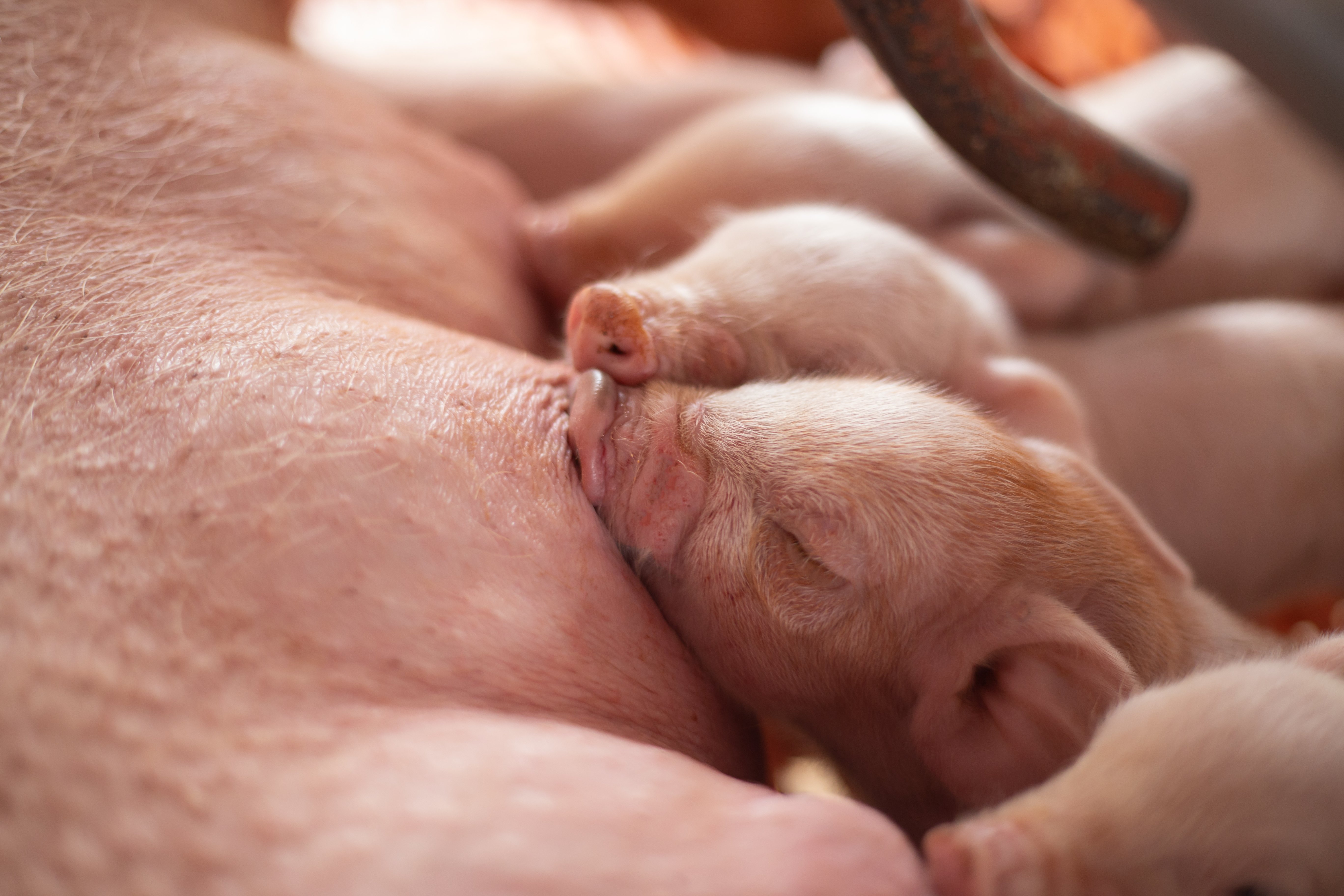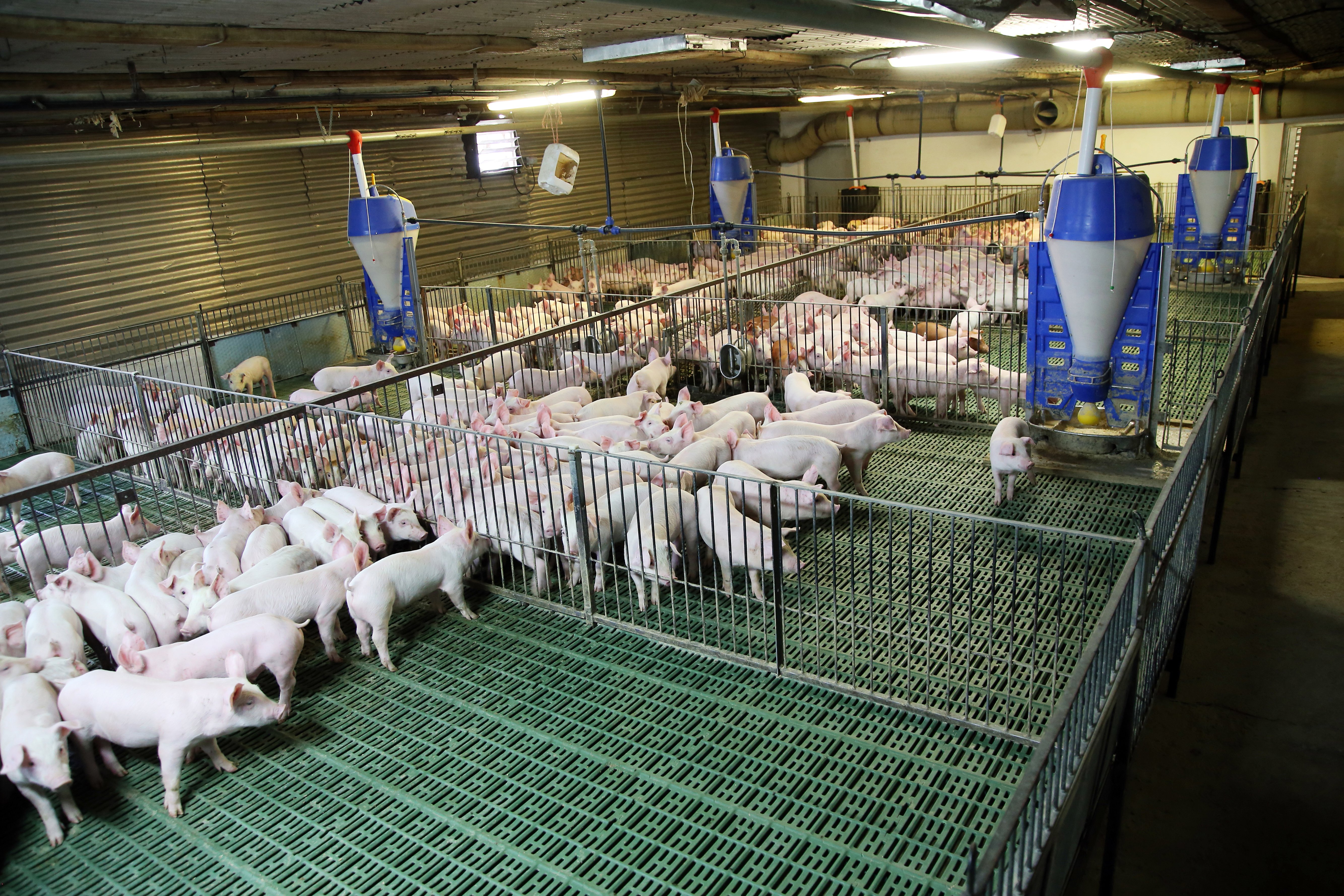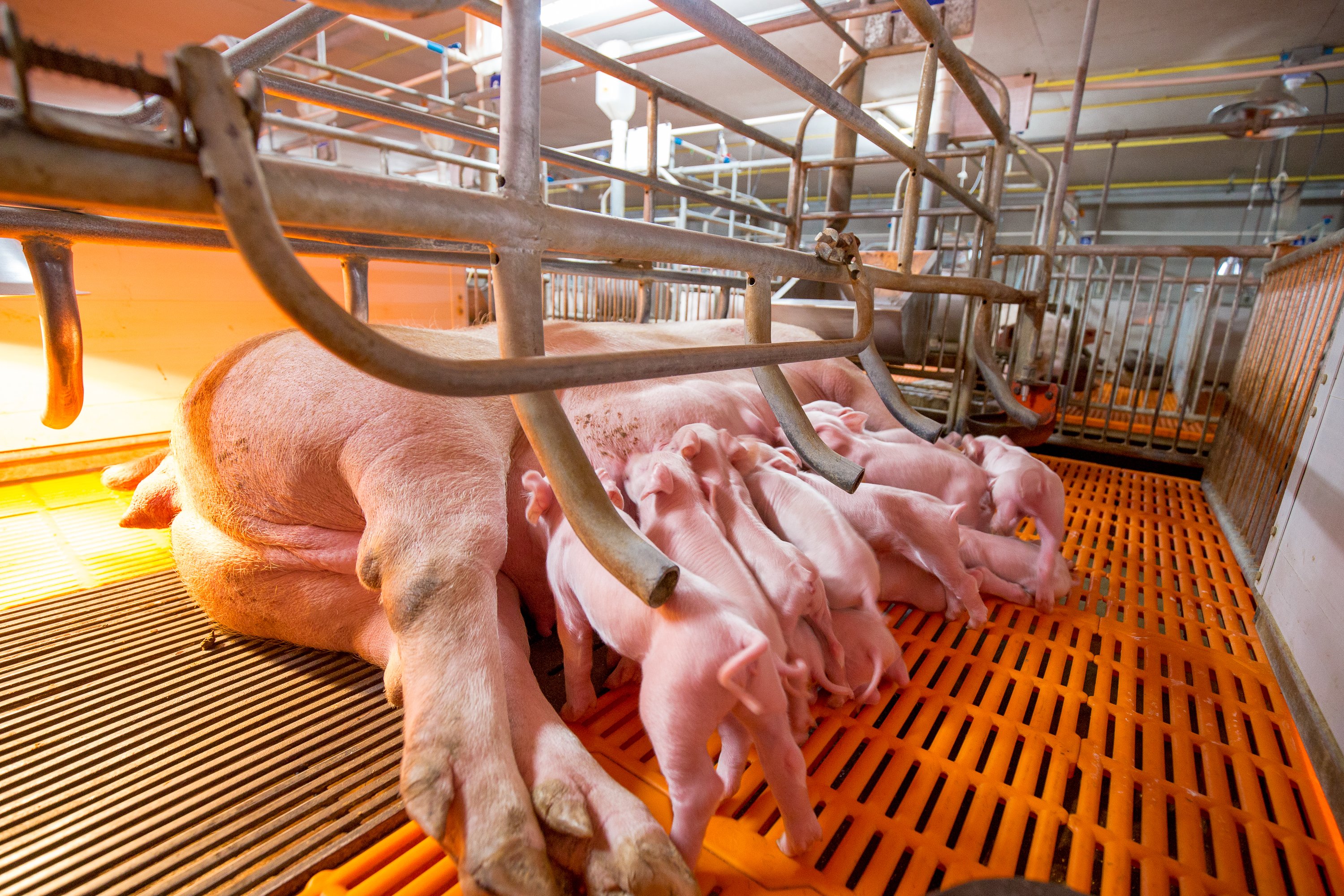23 December 2022
What is herd immunity?
The importance of herd immunity on pig farms
- Identify the particular disease risks in a pig farm. Before recommending a vaccination program, a careful review of endemic disease agents and the risk of external introduction of agents is essential.
- Consider the effect of maternal immunity (the younger the pig, the better protection because of high levels of maternal antibodies) and the age of the pigs at the time of vaccination (the older the pig, the better the vaccine response).
- Suffered financial losses compared to negative herds.
- Had an increase in feed costs in different production stages.
- Had lower annual mean profit.
- For a given level of profit, the risk of financial losses increases.
Herd immunity and piglet health during lactation

With a good level of herd immunity, we will also be capable of reducing piglet mortality during lactation
How does the piglet's health impact profits?
- Birth weight and weight gain the first 24h.
- Colostrum intake.
- Rectal temperature
- Plasma IgG and glucose concentrations at 24h of age.
Factors that influence pig herd immunity
To positively impact herd immunity on the farm, farmers can work on biosecurity, animal management, or vaccination, for example.
Biosecurity
Farrowing unit:
1. Strictly enforce the all-in/all-out system. Empty, clean, and sanitize between batches.
2. Shower the sows and treat them with dewormers before farrowing.
3. Carry out adoptions only and exclusively when necessary and during the first 24 hours after farrowing, but not before 12 hours after birth.
Post-weaning:
4. Use small pens (<13) with solid partitions.
5. Strictly enforce the all-in/all-out system. Empty, clean, and sanitize between batches.
6. House pigs at low densities (3 pigs/m2).
7. Increase the space per feeder by 7 cm/piglet.
8. Improve air quality (NH3 10 ppm, CO2 0,15%).
9. Improve temperature control.
10. Do not mix batches.
Growth/fattening phase:
11. Use small pens with solid partitions.
12. Strictly enforce the all-in/all-out system. Empty, clean, and sanitize between batches.
12. Do not mix pigs from weaning pens.
14. Do not mix animals in fattening.
15. House at densities higher than 0,75 m2/pig.
16. Improve air quality and temperature.
Others:
17. Carry out an appropriate vaccination program.18. Adequate air and animal circulation.
19. Carry out strict hygiene during tail docking, injections, etc.
20. Transfer to infirmaries or immediately euthanize sick animals.

Maximizing the level of biosecurity on our farms positively influences herd immunity.
Piglets management
Minimizing exposure of piglets to pathogens using all-in/all-out systems or a good biosecurity program can provide enhanced protection and give an extended window before vaccination.
However, those swine management systems where continuous flow and lower biosecurity are practiced may warrant a more aggressive vaccination program.
Replacement sows management and its influence on herd immunity
Farrowing unit management
The farrowing unit is the most crucial stage for the piglets' future and for the becoming of herd immunity.
Therefore, excellent farrowing unit management is needed. It includes:
- Tail docking.
- Teeth clipping.
- Castration
- Iron administration.
- Coccidiosis treatment.

A well-managed farrowing unit helps to improve herd immunity.
Vaccination improves pig herd immunity
- The cost–benefit, including labor to administer the vaccine.
- The improvement one would expect from the vaccination program requires knowledge of vaccine efficacy and an understanding the disease costs present in the herd.
- Improper storage and handling of the vaccine, such as failure to refrigerate or protect from light.
- Incorrect administration, such as subcutaneous injection, when an intramuscular injection is required.
How to evaluate herd immunity in the farrowing unit?
The evaluation of pig herd status and immunity has to be done using laboratory techniques for analyzing the antibody immune response in the pigs. The most used techniques are enzyme-linked immunosorbent assay (ELISA) and haemoagglutination (HI) test. In both cases, blood samples are needed from the sows in the farrowing unit.
ELISA
HI test for the evaluation of pig herd immunity
Conclusion
In short, improving biosecurity, applying for good vaccination programs, and a suitable replacement acclimatization protocol are vital aspects if we want to maintain a high level of herd immunity in our pig farms, which helps us improve at a productive level and, consequently, economically.
References
Anderson, R. M. (1992). The concept of herd immunity and the design of community-based immunization programmes. Vaccine, 10(13), 928-935. https://doi.org/10.1016/0264-410X(92)90327-G.
Bernaerdt, E., Maes, D., Van Limbergen, T., Postma, M. & Dewulf, J. (2022). Determining the characteristics of farms that raise pigs without antibiotics. Animals, 12(10), 1224. https://doi.org/10.3390/ani12101224.
Calderón Díaz, J. A., Fitzgerald, R. M., Shalloo, L, Rodrigues da Costa, M., Niemi, J., Leonard, F. C., Kyriazak, I. & García Manzanilla, E. (2020). Financial analysis of herd status and vaccination practices for porcine reproductive and respiratory syndrome virus, swine influenza virus, and Mycoplasma hyopneumoniae in farrow-to-finish pig farms using a bio-economic simulation model. Frontiers in Veterinary Science. https//doi.org/10.3389/fvets.2020.556674.
Calderón Díaz, J. A., Shalloo, L., Niemi, J. K., Kyriazakis, I., McKeon, M., McCutcheon, G., Bohan, A. & Manzanilla, E. (2019). Description, evaluation, and validation of the Teagasc Pig Production Model. Journal of Animal Science, 97(7): 2803–2821. https://doi.org/10.1093/jas/skz163.
Devillers, N., Le Dividich, J. & Prunier, A. (2011). Influence of colostrum intake on piglet survival and immunity. Animal, 5(10), 1605-1612. https://doi.org/10.1017/S175173111100067X.
FAO (2010). Good practices for biosecurity in the pig sector. https://www.fao.org/3/i1435e/i1435e.pdf.
Fitzgerald, R. M., O'Shea, H., García Manzanilla, E., Moriarty, J., McGlynn, H. & Calderón Díaz, A. (2020). Associations between animal and herd management factors, serological response to three respiratory pathogens and pluck lesions in finisher pigs on a farrow-to-finish farm. Porcine Health Management, 6(34). https://doi.org/10.1186/s40813-020-00173-z.
Kirkden, R. D., Broom, D. M. & Andersen, I. L. (2013). INVITED REVIEW: Piglet mortality: Management solutions. Journal of Animal Science, 91(7), 3361–3389. https://doi.org/10.2527/jas.2012-5637.
Lager, K. M. & Buckley, A. C. (2019). Porcine anti-viral immunity: How important is it? Frontiers Immunology, 10, 2258. https://doi.org/10.3389/fimmu.2019.02258.
Poonsuk, K. & Zimmerman, J. (2018). Historical and contemporary aspects of maternal immunity in swine. Animal Health Research Reviews, 19(1), 31-45. https://doi.org/10.1017/S1466252317000123.
Postma, M., Backhans, A., Collineau, L. Loesken, S., Sjölund, M., Belloc, C., Emanuelson, U., Beilage, E., Nielsen, E. O., Stärk, K. D. C. & Dewulf, J. (2016). Evaluation of the relationship between the biosecurity status, production parameters, herd characteristics and antimicrobial usage in farrow-to-finish pig production in four EU countries. Porcine Health Management, 2(9). https://doi.org/10.1186/s40813-016-0028-z.
Rose, N. & Andraud, M. (2017). The use of vaccines to control pathogen spread in pig populations. Porcine Health Management, 3(8). https://doi.org/10.1186/s40813-017-0053-6.
Stygar, A. H., Chantziaras, I., Maes, D. Moustsen, V. A., De Meyer, D., Quesnel, H., Kyriazakis, I. & Niemi, J. K. (2022). Economic feasibility of interventions targeted at decreasing piglet perinatal and pre-weaning mortality across European countries. Porcine Health Management, 8(22). https://doi.org/10.1186/s40813-022-00266-x.
The Pig Site (2002). UPDATE: Practical methods for controlling PMWS. https://www.thepigsite.com/articles/update-practical-methods-for-controlling-pmws.
The Pig Site (2020). Swine it #41 - What does herd immunity really mean? - Dr. Christopher Chase (podcast). https://www.thepigsite.com/news/2020/06/swine-it-41-what-does-herd-immunity-really-mean-dr-christopher-chase.
Zimmerman, J. J., Karriker, L. A., Ramírez, A., Schwartz, K. J. & Stevenson, G. (2012). Disease of Swine, 10th edition. ISBN 978-0-8138-2267-9.
